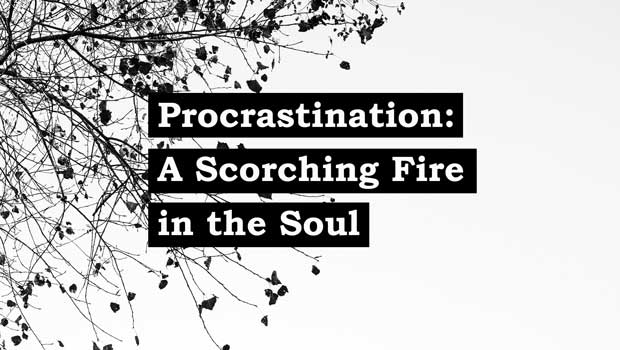The first time I visited Winston-Salem, North Carolina was six years ago, passing through the city on a trip farther south. With time to kill, I drove aimlessly through Winston’s downtown and the neighborhoods that fringed it. The homes were stunning and ornate—colonial revival style with brick façades and immaculate lawns. When I moved to the city a year later, I revisited the area and put a name to those neighborhoods: West End and Buena Vista, historic districts that housed some of the city’s wealthiest residents.
On that first aimless drive, however, I also strayed from the well-ordered path. A left turn from Reynolda onto Northwest, a second left onto Thurmond, and suddenly, I had traded the brick façades for faded, stained wood. The homes were smaller, many bearing the scars of storms and age. This neighborhood, too, I would learn by name: Boston-Thurmond, another historic district in the heart of Winston-Salem, known not for its wealth, but for its poverty.
Great Disparities in Wealth
I have spent five years in Winston-Salem. A short time, but enough to learn the rudiments of the city history and the stratifications—both economic and racial—that divide its residents. Nonetheless, the question I found myself asking during that first visit to town remains largely unanswered: how is it that the distance between these two neighborhoods is so small, but their disparities are so great? This question, however, is not unique to Winston-Salem or to any single community. Rather, it is a question that we can ask of our nation. In the twelfth richest country in the world, the touted home of the American Dream, how can 39.7 million residents live in poverty? In the country that accommodates four of the five richest people in the world, a proclaimed bastion of freedom and equality, why do Black men earn only $0.87 for every dollar a white man makes?
These profound disparities are crystallized by inequitable distribution of financial wealth, but people experiencing poverty also suffer from the inability to access goods and services. For example, in the United States in 2017, 40 million people were food insecure and 23.5 million people lived in an area defined as a food desert. Worse still, people of color experienced food insecurity at twice the rate of the national average, further emphasizing that while poverty affects everyone, it continues to affect communities of color at disproportionately high rates.
Access to Healthy Food
Food deserts are a particularly salient example of this. The USDA defines a food desert as a low-income area where at least a third of the population lives more than one mile from a large grocery store (or ten miles, in the case of rural areas). Indeed, a 2012 USDA report found that “…food desert tracts tend to have smaller populations, higher rates of abandoned or vacant homes, and residents who have lower levels of education, lower incomes and higher unemployment.” The suggestion here is that the food follows the money. Other research, however, is quick to emphasize that poverty is not the only indicator of a food desert tract. Black and Hispanic neighborhoods are less likely than their white counterparts to have supermarkets or access to healthy food, and are therefore more likely to be located in a food desert.
So yes, food does follow money, but food—affordable, healthy food, at least—also often follows white residents. Of course, in our country that pays Black men $0.87 for every dollar a White man makes, in our country with systematic barriers preventing Black and Hispanic residents from high-paying jobs, and where communities of color have unequal access to a quality education, the subjects of poverty and race are often closely intertwined, only to then be compounded by the lack of food access that these communities can suffer from. In this sense, the oppression that poor communities and communities of color face is a holistic and cyclical one.
We can return to Winston-Salem, North Carolina as a microcosm of this intertwined relationship between food deserts, poverty, and communities of color. In 2015, Winston-Salem formed a Poverty Thought Force to study and ultimately reduce poverty throughout the city. Among their numerous conclusions, they noted that 38 percent of the county’s low-income population lived in a food desert from 2010 through 2014, including 45 percent of low-income children. Most importantly, they wrote that neighborhoods such as those “south of [Interstate] 40 and east of [Highway] 52” do not have access to food assistance resources. These geographic boundaries directly align with a similar 2017 Housing Authority study, which stated that “African American residents live predominantly within three areas [of Winston-Salem]: east of US-52, south of I-40…and in tracts lying to the east of I-52.” What we recognized at a national level holds true in Winston-Salem: food deserts occur in low-income areas; the very same areas where communities of color are more likely to live than their white counterparts.
These statistics are not shocking, but they are upsetting. Within a mile of my Winston-Salem apartment, there are five grocery stores, a veritable wealth of choice that seems especially unnecessary considering the fact that my workplace, only two and a half miles south towards I-40, is located in a food desert. Again, there is a juxtaposition: the land of plenty, mere miles from the land of paucity. How do we rectify the great need that some communities face, especially communities of color, in light of the great wealth that other communities, especially white communities, possess? Of course, there is no easy answer. Phrases such as “achieving equity” or “fostering community development” are frequently tossed around while we still stop short of any meaningful action.
In the Land of Plenty, Plentiful Solutions
In Winston-Salem, I have found at least a partial answer through my work. The nonprofit, SHARE Cooperative, was founded by Winston-Salem locals to address food insecurity by opening a full-service food market in one of the city’s major food deserts. Most importantly, the food market follows a cooperative model, meaning that the members of the store—the folks who shop at the store every day—are also the owners of the store who have a vote and a voice in making every store decision. In this model, the grocery store becomes not just a space of food redistribution, but a space of power redistribution, a space where local residents gather to speak their opinions and have them heard, to build relationships in the store aisles and the community café, and to begin a movement that brings food justice to a city.
This, at least, is the vision. As with any vision, we have met barriers in realizing it. Regardless of SHARE’s work with food, residents in Winston-Salem still struggle with the lack of efficient public transportation and the lack of effective nutrition education. This means that even as SHARE opens its market, we must still explore better ways to give people the necessary skills to get through our doors and the necessary knowledge to understand what best to do when they are inside. This is true of any solution to food deserts; they are an issue that stems from a variety of connected causes, and so it equally requires a variety of connected solutions to create change.
Ultimately, it is impossible to prescribe any single solution in the fight against food deserts. They are the result of a thorny history of wealth inequality, racism, and a myriad of other factors, all of this producing an even thornier present. Yes, the land of plenty is a land of plentiful problems, a land of haves and have-nots, and a land of oppression. Yet, the land of plenty can also be a land of plentiful solutions. The first step is recognizing and understanding our thorny history. The last step, for now, remains uncertain, but we continue forward nonetheless, until change is realized and until the land of plenty is a land that everyone can call home.




